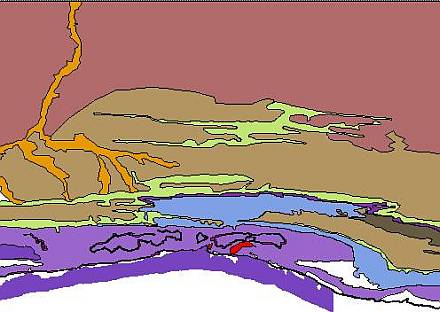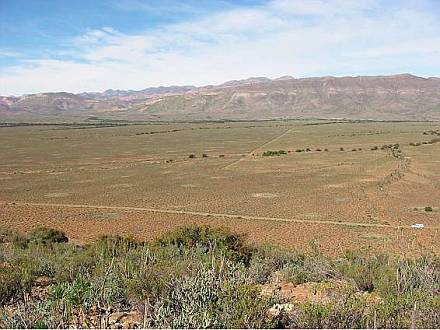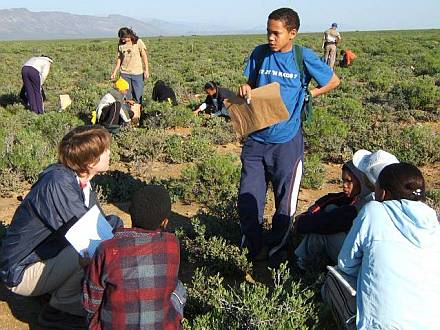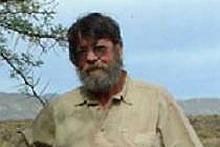Tierberg: 20 years of data on two Karoo biomes
|
- By Prof Sue Milton and Dr Richard Dean
Early next year SAEON will make a 20-year ecological data set from the southern Karoo available to the public through its website.
The data from Tierberg Karoo Research Centre (TKRC) that have been standardised and archived with SAEON support include 30 old and new spreadsheets (with corresponding metadata) with data on spatial or temporal changes in weather, soils, invertebrates, birds, plant populations, plant assemblages, biomass production and decay rates.
TKRC was established by the Council for Scientific and Industrial Research (FRD National Scientific Programmes) in 1987 as a long-term ecological observatory on a sheep farm 30 km east of Prince Albert (Milton et al. 1992, 2007). The rationale was that experiments and observations carried out by students and researchers at this site would contribute to understanding of the processes by which Karoo plant and animal assemblages change in response to grazing and weather.
Straddling two Karoo biomes
The TKRC field site (33.18 S, 22.26 E, 750 m a.s.l.) was selected in 1986 on the basis of its “typical” and “homogenous” Karoo vegetation. At the time when the field site was selected, the Succulent Karoo and Nama Karoo were not considered to be two distinct biomes. As can now been seen from its position on the South African vegetation map (Mucina and Rutherford 2006) the TKRC lies on the Succulent Karoo/ Nama Karoo interface (Figure 1).
The site is located in the colluvial valley of the Sand River, a river that runs between two ranges of hills, Witteberg quartzite to the south and Beaufort series sediments to the north. Soils are deep and alkaline (pH 7.5-8.5). The vegetation is grassless except along rivers, and comprises a mixture of succulent (mostly Mesembryanthemaceae) and non-succulent (mostly Asteraceae) shrubs. Rainfall is low (mean 176 mm p.a. range 50-400 mm from 1880-2008), brought by both frontal systems and convection, and can fall at any time of the year. An interesting zoogenic feature of the area are the heuweltjies or nest mounds of the termite Microhodotermes viator, which support animals and plants absent from the intervening soil and vegetation matrix (Figure 2).
Over the 20 years of its existence, the site has attracted local and foreign researchers (see Settle et al. 1999), and many visitors ranging from school learners (Figure 3) and students to international scientists. The data gathered on the site have been published locally and internationally as 127 peer reviewed papers and 14 doctoral and masters theses. Despite changes in funding and in science management over the years, the site managers (Richard Dean and Sue Milton) and their students have gathered and maintained data bases on the responses of the physical environment, plants and animals to grazing management and weather patterns.
 |
| Figure 1. Tierberg Karoo Research Centre in relation to South African vegetation types, roads, rivers and towns. |
 |
| Figure 2. Fence line between TKRC and the adjacent sheep farm “Argentina”. Light-coloured circles in the vegetation are "heuweltjies” (termite mounds). Trees follow drainage lines (Picture © TKRC) |
 |
| Figure 3. School learners collect biomass data at TKRC under the supervision of students from the University of Stellenbosch (Picture © TKRC |
.
The types of data collected at TKRC in relation to the major drivers
and response variables that are the focus of the research and
monitoring to be carried out through SAEON are indicated in Table
1.
The response variables that have received most attention at TKRC are within the biodiversity theme and include animal and plant activities such as foraging, movement, growth and demography. The most frequently investigated drivers of plant and animal responses have been climate (weather patterns) and land-use (grazing). Drivers that have received some attention in explaining vegetation patterns and animal behaviour are soil properties and system configuration.

Table 1. TKRC investigations (X) relevant to major drivers and response variables in South African ecosystems (based on Van Jaarsveld & Biggs (2000) and Milton et al. (2007)
Vegetation and plant population dynamics over time has been investigated through observations on fixed plots with and without access to sheep and or wildlife (Figure 4). The roles of disturbance and resource limitation in determining vegetation composition have been investigated experimentally by removal of competition by clearing and fire, and through nitrogen addition experiments (Figure 5) in which cover and flowering have been monitored. Above-ground productivity has been monitored by clipping and decay rates measured by repeated weighing or wood or counting of buried and exposed sheep dung pellets (Figure 6).
Quantifying climate change
The data collected at TKRC provides a baseline for quantifying changes that may be driven by climate change, particularly changes in temperature that could influence such processes as decay, growth, reproduction, hibernation/aestivation, and movement in plants and animals.
Switches from commercial ranching with domestic livestock to communal subsistence farming and to game farming and ecotourism are widespread in the Karoo at present. These changes in land-use involve road development, increased or decreased predator control, an increase in the relative abundance of large browsers (kudu, eland, giraffe), collection of dead wood for fuel, and a change in the permeability of fences to wildlife (possibly including tortoises and other reptiles, aardvark, porcupine, canids, small antelope and large birds). The effects of these socioeconomic and land-use changes on biodiversity, nutrient fluxes, alien invasive plants and other response variables should be investigated. TKRC could serve as a control for such studies.
We hope that the available data will stimulate further interest in Karoo research and that young scientists will rise to the challenge of filling the many gaps in interactions between drivers and response variables that are evident in Table 1.
Milton S.J., Dean W.R.J. and Kerley G.I.K. (1992). Tierberg Karoo Research Centre, history, physical environment, flora and fauna. Trans. R. Soc. S. Afr. 48(1), 15–46. Milton S.J., Dean W.R.J., O’Connor T.G. and Mills A.J. (2007). Scaling up from site-based research to a national research and monitoring network: lessons from Tierberg Karoo Research Centre and other design considerations. S. Afr. J. Sci. 103, 311-317. Settele J., Hoffmann I., Jahn R., Samietz J., Schafer C. and Vetterlein D. (eds) (1999). Rangeland management in the southern Karoo (South Africa), conflicts of landuse and environmental conservation. UFZ Report 23/1999. ISSN 0948-9452. Available from UFZ Centre for Environmental Research, Leipzig Van Jaarsveld, A. & Biggs, H. 2000. Broad participation enhances initial steps towards a South African ecosystem observatory system (LTER). S. Afr. J. Sci. 96, 63-66.












